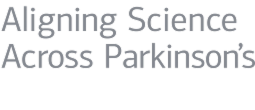Proteome census upon nutrient stress reveals Golgiphagy membrane receptors
Published September 27, 2023
Output Details
Published September 27, 2023
Description
During nutrient stress, macroautophagy is employed to degrade cellular macromolecules, thereby providing biosynthetic building blocks while simultaneously remodeling the proteome. While the machinery responsible for initiation of macroautophagy is well characterized, our understanding of the extent to which individual proteins, protein complexes and organelles are selected for autophagic degradation, and the underlying targeting mechanisms is limited. Here, we use orthogonal proteomic strategies to provide a global molecular inventory of autophagic cargo during nutrient stress in mammalian cell lines. Through prioritization of autophagic cargo, we identify a heterodimeric pair of membrane-embedded proteins, YIPF3 and YIPF4, as receptors for Golgiphagy. During nutrient stress, YIPF4 is mobilized into ATG8-positive vesicles that traffic to lysosomes as measured via Golgiphagy flux reporters in a process that requires the VPS34 and ULK1-FIP200 arms of the autophagy system. Cells lacking YIPF3 or YIPF4 are selectively defective in elimination of Golgi membrane proteins during nutrient stress. By merging absolute protein abundance with autophagic turnover, we create a global protein census describing how autophagic degradation maps onto protein abundance and subcellular localization. Our results, available via an interactive web tool, reveal that autophagic turnover prioritizes membrane-bound organelles (principally Golgi and ER) for proteome remodeling during nutrient stress.
Identifier (DOI)
10.1038/s41586-023-06657-6



